MPs recently raised serious concerns over the UK’s air surveillance capability as the RAF’s E-7 Wedgetail programme faces continued delays and questions mount over its strategic resilience.
Leading a Westminster Hall debate recently, Conservative MP for Dumfries and Galloway John Cooper warned that the gap left by the retirement of the E-3D Sentry aircraft has created a “credibility gap” in British air power.
“The RAF has a problem: it cannot offer a complete package,” Cooper told the chamber. “We could be reliant on NATO allies to give us extra cover.” He noted that while one Wedgetail is due to fly at this week’s Royal International Air Tattoo, none of the three UK-ordered platforms is yet fully certified for military operations.
Labour’s Tan Dhesi, a member of the Defence Select Committee, said the current state of the programme was “wholly inadequate” and criticised the 40% cut to the original five-aircraft fleet, made to achieve just 12% in cost savings. “Somebody needs to get a grip on this programme,” Dhesi said, calling for urgent closure of the UK’s early warning capability gap.
The E-7 Wedgetail, based on the Boeing 737 and equipped with a powerful Multi-role Electronically Scanned Array (MESA) radar, is already in frontline use with the Royal Australian Air Force. But the UK programme, announced in 2019, has slipped by at least two years. Cooper stressed the platform’s importance in providing “real-time 360-degree situational awareness of the battlespace” and compared the current deficiency to “relying on the mark one eyeball.”
Conservative MP Mark Francois used the opportunity to welcome Air Marshal Harv Smyth’s appointment as the new Chief of the Air Staff. “He is what the Americans would call a warfighter,” Francois said. “He and Sir Rich Knighton will provide a powerful team in the defence of the United Kingdom.”
Labour MP Dr Zubir Ahmed spoke on the economic importance of the Wedgetail programme, highlighting the role of Thales in Glasgow, which is producing the aircraft’s threat warning system. “Will [the Member] celebrate the contribution of Scottish firms to the defence of our realm?” Ahmed asked.
Cooper welcomed the industrial impact but launched a scathing attack on the Scottish Government’s lack of support for defence innovation. He claimed that ministers in Edinburgh had refused to fund a new Rolls-Royce welding centre of excellence in Clydebank, while the UK Government was prepared to “back it to the hilt.” He called the SNP’s defence posture “fifth-columnist” and “quite remarkable.”
Cooper also addressed concerns raised in Washington about the survivability of the Wedgetail platform in a contested airspace. He quoted US Defence Secretary Pete Hegseth describing the aircraft as “not survivable in the modern battlefield.” With the US reportedly exploring alternatives, including legacy E-2D Hawkeye aircraft and future satellite constellations, doubts remain over Wedgetail’s longevity.
Concluding, Cooper said he hoped the Minister would “give the House some assurance that it is not the Ajax of the skies.”
A formal ministerial reply is expected following the summer recess.



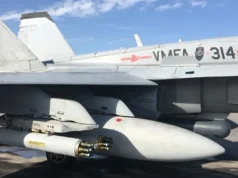

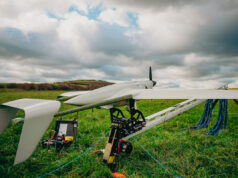
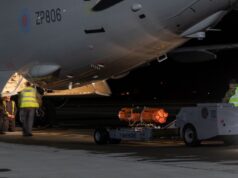
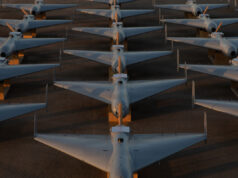

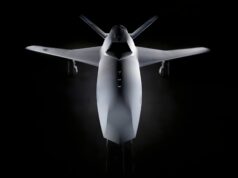




Well that’s one in a very longggggg list of serious concerns.
one at Boscombe Down now so hopefully will get some progress?
Don’t hold your breath, systems testing is the real hurdle the E7 has to complete. This system although not a new design must contains some new elements which were necessitated by the time since the the RAAF completed their last aircraft some 10 years ago. It has been my experience that we continually underestimate the resources and time it takes to complete advanced systems testing. Problems will be found in the software which require fixing and for that a knowledgeable software team needs to be available, sometimes 24 hrs /day, to generate the fix, integrate it into a new build and confine its efficacy with regression testing. All of this takes time and patience but it is the activity which always gets cut back in programme scheduling because all the previous elements of the project have eaten much of any contingency built into the programme. Of concern must be that size and knowledgeability of the software team given the E7 is not a new aircraft and the Boeing team who built the Wedgtail will have dispersed by now and Boeing will be under pressure on costs so it might not have the ‘A’ team available particularly now given the Trump Administration’s termination of the USAF E7 programme (subject to Senate confirmation). Also in the background the UK MAA will want to understand and approve all safety related changes to the flight software so having an aircraft available for external photographs and display flying is one thing but not perhaps the biggest challenge of getting an aircraft into Service.
The senate saved the E-7 program in the US. They cancelled the E-2D plans. They will be gettin something like 28 E-7s i believe.
Thanks, I haven’t seen this outcome yet but if correct it will help the UK complete its E7 programme as the USAF wanted to piggyback on much of the common system testing and it will also give relief to NATO who have ordered 6 E7s with more to follow to replace all of their E3s eventually. There has been much lobbying by ex UASF senior officers and many ex-AWACS operators given the E3 is core to USAF current warfighting Doctrine which the E2D, although very effective for Fleet defence, couldn’t come close to fulfilling.
Do you have a source for this?
Scouring my usual avenues and searching the news I see no confirmation of what you’ve just said.
SAAB of Sweden have demonstrated the value of keeping flight controls separate from avionics that must be frequently improved on Grippen.
Obviously AWACS is another frequently improved platform so we’ll worth keeping flight control separate so reducing the initial and midlife testing efforts. Readiness requires effective not obsolete
It takes some nerve for a Conservative MP to criticise how this programme is running.
Politicians have short memories and a large capacity for hypocrisy
Very much so.
It has the smell of doom about it!
TWZ did a very interesting piece the other day. Basically an AEW mounted on a Reaper type of platform giving a fleet/overland coverage at a fraction of the price of manned systems. Numbers, endurance and affordability. Given what I read about long range AAM developments? Are AEW aircraft now obsolete?
The MQ9-B would be great to work from QE’s but also if you teamed up 2-3 with an E-7 they cover cover a front 5-600 miles wide operating 100 miles fwd of the E-7 that would basically cover Norway – Iceland as a picket line. NATO could even base 9 MQ9 at Faroes with ground station and have 24/7 radar fence
Every thing we buy is cost cut to save money, which means we have pay more to fix it, years delayed, is there any one in the MOD who knows what they are doing? Oh well lets see whats ordered in the Winter then cut/changed, delayed, gapped, etc etc, a farce that has been going on for years.
I would wager that the MOD is at the whim of the smoothbrains in the Treasury who know the price of everything but the value of nothing.
Any budget decision that seems truly staggeringly stupid is invariably from the Treasury. They don’t care if the total cost of anything quadruples over its lifetime as long as they can temporarily reduce the balance sheet now. Treasury Brain is one of the many infirmities that plague modern Britain.
The Transformation within Strategic Defence Review is covering this problem.
Not just from 3 service Joint Force to Whole of Defence (Space, Cyber additions) but to Whole of Government (MoD, HMT, FCO) approach so that money decisions will no longer stand alone from Defence and Foreign Office.
Given the imminent 2.75% GDP funding, CDS said to expect more, sooner. The Director of Equipment position is to lead the focus on equipment in the next stage after SDR. IIRC that’s a costed plan leading to the Defence Industrial Strategy (long term demand, suitable for investment decisions).
Treasury think equals heating budget for example £1200 at £100 per month to use. June July and August you have only spent £10 a month, they then removed the other £270 as not required. October why have you over spent your budget? This is a true story figures altered, the Treasury official did’nt understand it gets cold in winter. It makes one wonder who has the defence budget at heart.
That is very true, buy and save a few pounds then have mod the kit or order more years later. Same story every time for years.
The said tory spanner has a short memory ,WHO CUT THE NUMBERS!!!!!!
Before we get too enamoured with the prospects of a MQ-9 AEW platform operating from our carriers. It would be good to understand the context of what the MQ-9 AEW platform can and cannot do? If we take the E7 with its L-band (1 to 2 GHz) MESA radar. It has a published detection range of around 600km (370 miles) in an air to air mode (more likely to be quite a bit more). With the best will in the World, a similar radar cannot be fitted to the MQ-9. A much smaller antenna array will have to be fitted, making its detection range a lot shorter.
The recent publication of General Atomics working in collaboration with Saab, to design an AEW platform based on the MQ-9, does raise some interesting questions. Particularly on what radar will be fitted? Traditionally these types of platforms have been limited to carrying X-band (8 to 12GHz) radars. Which are great for searching for sea skimming missiles etc, but really poor for long distance detection. Which is due to a number of reasons, primarily being how X-band frequencies are attenuated by the atmosphere. But also a lack of space for larger power amplification and cooling. The costs to make an X-band radar see further than 200 miles start to seriously ramp up, with declining range benefits.
However, it has been rumoured that Saab may be using parts of the latest Giraffe 4A S-band AESA radar. But with the 4A’s antenna array being around 2.5m to 3m square. This would simply be too large to fit on the MQ-9. So it may use a cut down version, with a pair of antenna arrays arranged in a pair of underwing pods to look left and right. However, these will need to contain fewer transmitter-receiver modules (TRMs) that make up the array. With fewer TRMs the power and sensitivity is reduced, as well as the ability to better shape the beam, i.e. make it tighter/rounder.
The effect of using a smaller array made up of less TRMs will limit the transmitted range as well as the receiver’s sensitivity. Therefore reducing its overall detection range. To package the 4A TRMs into a smaller array is obviously doable, but does come with some compromises. The other major compromise is how an S-band radar is used to look down at the sea to search for and track for sea skimming missiles. Traditionally radars that use frequencies below X-band (8 to 12GHz) seriously struggle to detect targets within the sea’s clutter (especially when choppy). However, today you can throw significant amounts of signal processing along with software at the received signal, to give you a better indication of what’s going on. But it still isn’t perfect! In part because X-band radar transmit a much smaller cross sectional beam. The sea’s area the end of the beam sees is a lot smaller, so the amount of processing required is significantly less to detect something like a periscope or a sea skimming missile.
In an ideal world, we would have something like the Globaleye operating from the carrier. Where it uses two primary radars to search for threats. The main radar is the above cabin extended range Erieye that operates in the S-band (2 to 4Ghz). This is used for volume and long range detection. Whilst underneath the aircraft, there’s a Seaspray 7500E X-band AESA radar, used to look down and search the seas and land. Unfortunately the Bombardier 6000 used for Globaleye, is not suitable for carrier operations, so something else will have to be picked. In essence the MQ-9 is too small to be a AEW platform that could match the Globaleye or even the older Erieye, as you have to make some serious radar performance compromises to make an S-band radar fit.
The MQ-9 positives are that it can operate for longer and at a higher altitude than a Crowsnest equipped Merlin. But will it with an S-band radar perform as well as Crowsnest, when searching for small, low and fast moving objects near to the sea?
A lot has been said recently that very long range air to air missiles make AEW platforms obsolete. That is not true! If the platform cannot detect threats past 250 miles (400km). Then there is a much greater chance of it being taken out, especially by weapons such as the R37M or PL17. As the launch aircraft can get into launch range without being detected. These missiles have a terminal speed between Mach 4 and 6 (4940 to 7410kph or 0.80sec/km to 0.50sec/km).Which means they could theoretically cover a 400km distance from 320 sec to 200 sec or 5 min’s 20 secs to 3 min’s 20 secs, from launch to intercept. However, because both of these missiles use dual pulse solid rocket motors, the time will actually be longer, as the missile will be slowing down during the cruise phase after the 1st stage has run out of fuel. When it reaches the start of its terminal phase, it ignites the second part of the motor to accelerate again.
Because of the time and distance to reach the target, the launch aircraft must hang around and track the AEW platform, to give positional updates to the missile via datalink, which is operating purely on internal navigation during the cruise phase based on the initial AEW location prior to launch. A NATO AEW platform never operates on its own. It will have a fighter screen between it and the likely threat direction. The AEW platform should also be able to detect the datalink if has the right ESM kit, as well as seeing the launch on radar. Giving it a clue a threat is on its way.
For something like the E7, and its 600km detection range. The radar will detect the threat aircraft before it can be in a position to launch. It will send its protection to intercept. If the protection screen is detected by the threat, it has a choice of continuing, but will expect to be engaged or turn away. If the threat aircraft does get into launch range and fires. The protection will still try to intercept, and force the threat aircraft to make it turn away, thereby breaking its means to update the weapon in flight. The AEW platform would then try to change the distance and angle between the missile’s flight path and its current location. So that when the missile goes active it will be outside the detection cone. Also the long range missile could be intercepted by something like AMRAAM, Meteor or ASRAAM. For a platform like a Merlin equipped with Crowsnest, this is a problem, as potentially something like a J20 could get in to launch range before its detected. Though the J20 has to carry a PL17 under a wing, which increases its radar cross section, but it will be close. Whatever replaces Merlin/Crowsnest must be able to detect threats beyond 400km, but also be able to detect and track sea skimming threats.
It seems that the the US Senate has proposed to restore funding for development (R&D) of the USAF E7 at about $500M in the FY26 Defence Budget . This doesn’t fund full production but it seems unlikely they would develop their version of the E7 and then not take it into service. But some in the Pentagon claim that the E7 is too vulnerable and the E3 can only be replaced by a space based solution. They are using the recent shoot down of two Russian A-50 Awacs aircraft by Ukraine to support their claim. Despite considerable experienced senior Officer lobbying for it to be retained,it looks like the USAF E7 programme is not ‘out of the wood’ and its future depends on the outcome of this vulnerability debate within the Pentagon.
To be brutally honest, the Russians have only themselves to blame with the shooting down of the Mainstays. But it was also a brilliant piece of pattern recognition by the Ukrainians. As they monitored the Mainstays pushing further north to see further into Ukraine. Which gave them an opportunity. Having a Patriot battery sit nice and quiet, waiting for the Mainstay to get in range, must have been pretty nerve wracking. As the battery could have been discovered at anytime. The coordination of networking the battery would have been fairly simple to relay the location of the Mainstay. But the Mainstay just kept creeping north, where it came into range, with the obvious consequences.
For Russia to risk such assets is pretty unforgiveable, even if they have 30 or so. They did not sanitize the area for the Mainstay to go into, which led to them being taken out. I would like to think that we (NATO) would not do anything that stupid with such a valuable asset!
There was a USAF General who recently stated that we will soon be seeing 1000 mile range surface to air/air to air weapons. But you really need to evaluate that statement. If we are talking of something that is supersonic or faster, then its not going to be small. There’s very little point in making such a weapon subsonic, as it would take too long to reach the target. If we look at the Kh47 Kinzhal, which is an air launched ballistic missile. It is over 7m long, weighs over 4t and travels around 480km (300 miles). To go further it would need to be made either bigger to carry additional fuel, or have additional rocket stages adding to it. Whilst it is likely to have a terminal speed of around Mach 10. Would it make a useful anti-air weapon? What platform will be capable of carrying a bigger weapon?
Yes you could strap on a radar/IR seeker to Kinzhal. But like the the slower (Mach 6) R37 long range air to air missile, it is relatively easy for a fighter aircraft to dodge. As the missile has a huge turning radius. Against something like a tanker or AEW platform, which sit many miles behind the front line (unless you are Russian). You will need a pretty extensive kill chain, to monitor the position of the moving target and then relay that information to the missile that is in flight.
With the right kit, you could track the transmissions of an AEW platform such as the E3. As the radar is not very frequency agile and transmits over a narrow band. Tracking a E7 is still doable but harder. As the MESA radar can hop its frequencies over a much wider band. Plus the narrower beam can be made to sweep the skies much faster, giving the tracker an intermittent transmission to try and detect. You could also use over the horizon radar (OTHR), to track large aircraft, by identifying the race track type patterns they fly will hint that it’s a military aircraft. However, OTHR does not give you altitude information only a rough indication that an aircraft is in an area that could be up to 70km square and is traveling in X direction. As the AEW platform (NATO based) will have fighter protection, it’s unlikely the enemy launch aircraft will get close enough to maintain its datalink with the missile. Plus missiles such as AMRAAM, Meteor and ASRAAM can be used to take out the long range missile.
It seems obvious that satellite based sensors will be the next big thing for surveillance and tracking. As we already have satellites that use radar and IR to monitor what’s going on beneath them. In the early noughties, an IR based satellite was used to track a F15, so it can’t be that hard right? Well they’ve talked about using satellites to track aircraft since the 1980’s and we are still not in a position to say its doable. In concept, yes it can work, but we are at least 10 years away from a working example, perhaps another 20 years before we start seeing tangible results. But here’s the crunch, whose to say the US will crack all the issues first, China can throw more money and resources at it. Therefore I would not be surprised to see in the near future that China is the first to have an operational system that can be used to track aircraft via satellite.
If we use a constellation of low earth orbit satellites, that makes them very vulnerable. As their orbital path is fixed and predictable. Therefore making them easier to target either kinetically or passively. Put the satellites in a much higher orbit similar to the GPS ones. The order of complexity significantly ramps up along with the cost. I will fully expect Nations such as Russia and China to be capable of targeting low earth orbiting satellites for Day 1 operations of a conflict. Then it will be a race to see who can replace their knocked out satellites the quickest or at all!
Aircraft such as the E7 are currently the most effective method of monitoring the skies. They are significantly less vulnerable than satellites as their flight paths are not predictable (unless doing constant racetrack patterns), plus they will have a fighter screen protecting them.
Sorry- the government have no bandwidth to address the defence situation at this time. They are struggling to get to grips with a failing economy, rising unemployment, falling living standards, ballooning national debt, excessive benefit payments and the boat people.
Hi Davey – I agree with your analysis and believe the vulnerability issue is just political in that some in the Pentagon believe they know better than the operators because it suits their political objectives. Operationally, in time of tension, I am confident an AWACS crew (E7 or E3) would allocate one of its surveillance positions to maintain constant look out for possible threats detected by the radar, from datalinks or from other onboard systems – not so easily done in an E2D with only 3 positions and with a radar optimised for over water operation operating at lower altitude giving it a reduced detection range compared with the E3 or E7.